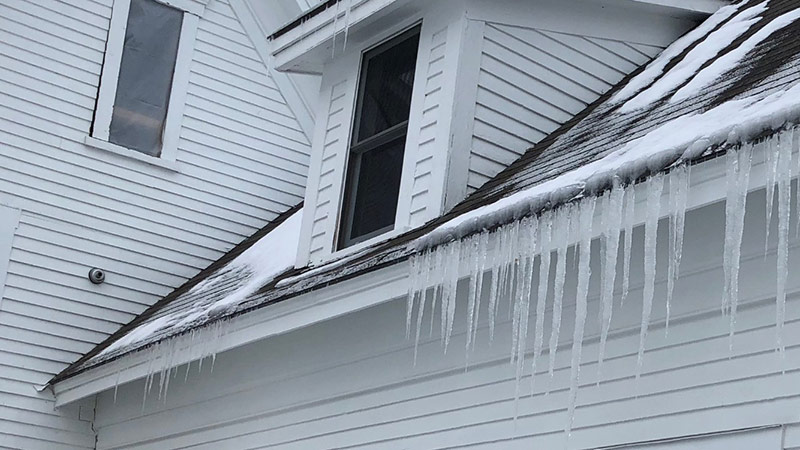What are your icicles telling you?

Most folks have heard that icicles are a sign of heat loss. However, judging by the size and location of the icicles hanging precariously from the edges your roof, you are able to close in on some of the larger areas of that heat loss, that are potentially easy to access and possibly even be affordable to remedy.
Air pathways transferring heat, out of your home, by means of convection are mostly responsible for creating these glistening, beautiful, yet damaging icons of winter.
This blog, however will discuss conduction: The transfer of heat by proximity when building materials, as well as other objects, are in contact with one another.
During conduction the heat passes from one object to another the same way as when you might warm your fingers by placing them under your armpits.
What is recommended is a “thermal break”. Whenever available to do so, place a layer of some form of insulating product between any two non-insulating products. i.e. between the roof sheathing and the roofing material, or between the ground and a concrete slab. Where ever outside temperature is connected to the inside temperature, a transference of thermal energy will exist.
This is where the benefit of using a thermal break arises; Your frosted fingers will pull more heat in if they are directly against skin. But, if you still have your coat on? Not so much conduction.
A more recent technique in building construction is the “cold roof”. You may have heard the term and maybe thought it sounded a bit too chilly for your comfort but in fact, a cold roof, installed correctly, should alleviate all chance of icicles falling from your roof and damaging life or property.
The suns UV rays may, also, in part, contribute to the thawing and freezing on roof tops however the larger icicle, the larger the heat loss.
Baby it’s cold outside, so button up where ever and whenever you can.
Click the “Contact Us” button in the menu for tips on how to keep more of the heat, you produce, inside of your home this winter. Your icicles may be talking to you right now.
What are your icicles telling YOU?
